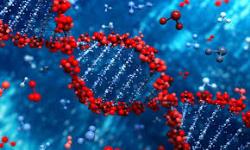
molecularbiology-biochemistry-2021

Theme: Examine the Exploration & Impending Movements of Molecular Biology and Biochemistry
The Webinar on Molecular Biology and Biochemistry is scheduled on April 29, 2021 . The primary topic of the Molecular Biology and Biochemistry 2021 is “Examine the Exploration & Impending Movements of Molecular Biology and Biochemistry”. The point of Molecular Biology – Biochemistry webinar is for the Scientists, Researchers, teachers, business delegates, students and research associates to tell about their experience and knowledge and also about the research they are working on it. The conference Molecular Biology – Biochemistry 2021 focuses on the investigation of the molecular mechanisms by that genetic information present on deoxyribonucleic acid is in a position to lead to the processes of life. Biochemistry has its applications in wide-ranging fields. Much of the work in Molecular Biology is quantitative, and as of late much work has been done at the interface of Molecular Biology & Software Engineering in Bioinformatics and Computational Biology. As of the mid 2000s, the investigation of quality structure and capacity, molecular hereditary qualities, has been among the most conspicuous sub-field of Molecular Biology.
1. Next Generation DNA Sequencing
DNA sequencing is the procedure of determining the nucleic acid series – the order of nucleotides in DNA. It consists of any method or generation that is used to decide the order of the 4 bases: adenine, guanine, cytosine, and thymine. The arrival of speedy DNA sequencing techniques has significantly extended biological and medical studies and discovery. NGS refers to strategies wherein millions of nucleotide sequences are deciphered simultaneously and is frequently called vastly parallel sequencing. The complete sequencing of the human genome at some stage in the early 2000s engendered a need for distinctly cheaper, excessive-throughput sequencing methods, a need that was met through numerous NGS structures that have been quickly commercialized. NGS platforms have validated to be especially quantitative and adaptable for multiplex marker testing to fulfill precise clinical needs. Those systems require a stepwise approach to tissue processing, nucleotide extraction, and library practice for successful biomarker trying out. Sequencing is utilized in molecular biology to examine genomes and the proteins they encode. Facts acquired the usage of sequencing permits researchers to pick out changes in genes, institutions with illnesses and phenotypes, and perceive capacity drug objectives.
Molecular biology issues the molecular basis of biological activity between the varied systems of a cell, as well as the interactions between the various varieties of DNA, RNA and proteins and their biosynthesis, and studies however these interactions are regulated. Its several applications like in gene finding, molecular mechanisms of diseases and its therapeutic approaches by cloning, expression and regulation of gene. Analysis space includes gene expression, epigenetics and chromatin granule structure and performance, RNA process, functions of non-coding RNAs, transcription. Nowadays, most advaced researches are occurring these topics: molecular biology, deoxyribonucleic acid replication (DNA), repair and recombination, Transcription, RNA processing, Post-translational modification, proteomics, Mutation, Site-directed mutagenesis, Epigenetics, chromatin granule structure and performance, Molecular mechanisms of diseases.
3. Techniques of Molecular Biology
Molecular cloning One of the most primary techniques of molecular biology to study protein feature is molecular cloning. On this approach, DNA coding for a protein of interest is cloned the usage of polymerase chain reaction (PCR), and/or restriction enzymes right into a plasmid (expression vector). A vector has three distinctive functions: a beginning of replication, a multiple cloning site (MCS), and a selective marker usually antibiotic resistance. Positioned upstream of the more than one cloning site are the promoter areas and the transcription start site which adjust the expression of cloned gene. This plasmid may be inserted into both bacterial and animal cells. Introducing DNA into bacterial cells may be executed by means of transformation via uptake of bare DNA, conjugation through cell-cell contact or by way of transduction through viral vector. Introducing DNA into eukaryotic cells, along with animal cells, by bodily or chemical manner is called transfection. Several exceptional transfection techniques are available, consisting of calcium phosphate transfection, electroporation, microinjection and liposome transfection. The plasmid can be included into the genome, ensuing in a stable transfection, or may stay unbiased of the genome, referred to as transient transfection. Polymerase chain reaction Polymerase chain reaction (PCR) is a very versatile technique for copying DNA. In brief, PCR permits a specific DNA sequence to be copied or modified in predetermined ways. The reaction is extremely effective and under ideal conditions could expand one DNA molecule to grow to be 1.07 billion molecules in much less than two hours. The PCR technique may be used to introduce limit enzyme sites to ends of DNA molecules, or to mutate precise bases of DNA, the latter is a way called site-directed mutagenesis. PCR can also be used to determine whether a selected DNA fragment is determined in a cDNA library. PCR has many variations, like reverse transcription PCR (RT-PCR) for amplification of RNA, and, more recently, quantitative PCR which permit for quantitative dimension of DNA or RNA molecules. Gel electrophoresis Gel electrophoresis is one of the major equipment of molecular biology. The primary precept is that DNA, RNA, and proteins can all be separated by means of an electric field and size. In agarose gel electrophoresis, DNA and RNA can be separated on the premise of size by means of running the DNA via an electrically charged agarose gel. Proteins can be separated on the premise of size by way of using an SDS-page gel, or on the idea of size and their electric charge by means of using what is called a 2d gel electrophoresis. Macromolecule blotting and probing The terms northern, western and eastern blotting are derived from what to begin with became a molecular biology joke that played on the term Southern blotting, after the approach defined with the aid of Edwin Southern for the hybridization of blotted DNA. Patricia Thomas, developer of the RNA blot which then has become called the northern blot, actually did not use the term.
Biochemistry Conferences | Molecular Biology Conference | Biochemistry Events | Biochemistry Meetings | Molecular Biology Events | Molecular Biology Meetings| | Molecular Biology Congress| Biochemistry Congress
4. Cellular and Molecular Biology
Cell and molecular biology is a knowledge base field of science that deals with the fields of chemistry, structure and biology because it seeks to know life and cellular processes at the molecular level. Molecular cell biology primarily focuses on the determination of cell fate and differentiation, growth regulation of cell, Cell adhesion and movement, intracellular trafficking. The connection of signalling to cellular growth and death, transcriptional regulation, mitosis, cellular differentiation and organogenesis, cell adhesion, motility and chemotaxis are additional more topics below Cellular and molecular biology. Molecular biology explores cells, their characteristics, parts, and chemical processes, and pays special attention to how molecules control a cell’s activities and growth. The molecular elements form up biochemical pathways that give the cells with energy, facilitate process “messages” from outside the cell itself, generate new proteins, and replicate the cellular deoxyribonucleic acid genome. to know the behaviour of cells, it's necessary to add to the molecular level of description an understanding on the amount of systems biology.
5. Structural and Molecular Biochemistry
Structural biochemistry is a sub-division of biochemistry that primarily focuses on the structural characteristics of the molecules within cells and other created of living organisms. The most area is targeted on structural basis of basic biological processes. It involves the study of the structure of macro molecules. It includes methods for structure determination and huge information of structural data. Few of the tools are used to study some category of structures like membrane, regulatory proteins, and structural proteins. These structural macromolecules can give the framework for discussion on domains, motifs, structural similarity, etc., in addition as addressing on how specific biological issues will be resolved at the atomic level. A significant branch of biochemistry deals with the many aspects of macromolecules at the structural and useful levels. It in addition deals with the interactions amongst all totally different cell components as well as macromolecules like nucleic acids, proteins, lipids, amino acids and carbohydrates. Molecular biochemistry has huge wide to capture the array of chemistry, physics, medicine and biology. It’s one of the foremost necessary aspects of molecular biology to find the chemical properties of the molecules. The processes that occur within the cell area unit answerable for their structure, reproduction and response to stimuli.
6. Clinical and Nutritional Biochemistry
The field Clinical biochemistry is a study of biochemical mechanisms within the body in relevancy un-wellness condition, through the testing of body fluids like excrement or blood or saliva. Many diseases tend to indicate necessary changes in their chemical composition of body fluids similar to the increased levels of blood enzymes because of their release from heart muscles soon after an attack or also elevated glucose levels in diabetes mellitus that happens because of less or null of internal secretion. Biochemistry tests are aimed to note these modifications either qualitatively or quantitatively compared to results from nutrient individuals. Clinical biochemistry uses a good vary of analytical techniques with its applications primarily in clinical chemistry, biology, therapeutic drug observance, toxicology, laboratory medicine & immunology used for diagnosis, prognosis, treatment and management of disease. Nutritional biochemistry maintains with the perception of mechanism by which diet influences human health & sickness condition. It primarily contributes with the properties of nutrients, completely different dietary substitutes & the study of their physiological, metabolic, biochemical & epigenetic functions. Nutritional organic chemistry may be a combined type of science as a result of it incorporates physiology, pharmacology, medicine, biology, microbiology & chemistry & implements these sciences specifically to study of sickness conditions, health, nutrition, & the connections that exist between them.
Biochemistry Conferences | Molecular Biology Conference | Biochemistry Events | Biochemistry Meetings | Molecular Biology Events | Molecular Biology Meetings| | Molecular Biology Congress| Biochemistry Congress
7. Medicinal and Pharmaceutical Biochemistry
Medicinal biochemistry is that branch of medicine involved the biochemistry and metabolism of human health and illness. The medical chemist is trained among the operation and management of clinical biochemistry laboratories, and acts as an authority in all aspects of their use. The medical chemist directs clinical laboratories, consults, diagnoses and treats patients with a range of metabolic disorders and biochemical abnormalities. Medical biochemistry addresses the functioning of traditional and pathologic organisms from a biochemical purpose of view. Through modules in neurodegeneration, disorder and medicine, one will develop a strong understanding of the implications of biochemistry at intervals medicine aboard the analysis and experimental skills. Pharmaceutical biochemistry consist the information of biochemistry & chemistry & applies to the production of the various useful drugs. It primarily problems with the science of drugs, their clinical uses and thus the study of their adverse effects on living organisms. It provides an entire understanding of all chemical processes occurring and associated with living cells at the molecular level that is related to drug action. It jointly helps to acquire information on the adverse effects, molecular targets, & characterization of drugs or completely different chemical substance among the living cells & organisms.
Biochemistry Conferences | Molecular Biology Conference | Biochemistry Events | Biochemistry Meetings | Molecular Biology Events | Molecular Biology Meetings| | Molecular Biology Congress| Biochemistry Congress
8. Protein and Analytical Biochemistry
Proteins provide most of the molecular machinery of cells. Several square measure enzymes or subunits of enzymes. Various proteins play structural or mechanical roles, like those who kind the struts and joints of the body structure. Each macromolecule is linear polymers designed of amino acids. Analytical biochemistry is that the study of biochemical elements found in an exceedingly cell or alternative biological sample. This field uses a broad vary of techniques for separation, identification, quantification and practical characterization of biological molecules like nucleic acids, enzymes, proteins, pigments, carbohydrates and extra. The most ways that involved in analytical biochemistry to separate the biological elements are analysis techniques, chromate graphical Techniques, super molecule Estimation & Purification Techniques and drugs Techniques.
Biochemistry Conferences | Molecular Biology Conference | Biochemistry Events | Biochemistry Meetings | Molecular Biology Events | Molecular Biology Meetings| | Molecular Biology Congress| Biochemistry Congress
9. Proteomics in Biochemistry and Molecular Biology
Proteomics is that the large-scale study of proteins. Proteins are very important parts of living organisms, with several functions. The proteome is that the entire set of proteins that are made or changed by an organism or system. This varies with time and distinct needs, or stresses, that a cell or organism undergoes. Antibodies to specific proteins or to their changed forms are utilized in biochemistry and cell biology studies. These are among the foremost common tools utilized by molecular biologists nowadays. There are many specific techniques and protocols that use antibodies for protein detection. molecular biology considerations the molecular basis of biological activity between biomolecules within the numerous systems of a cell, together with the interactions between deoxyribonucleic acid, RNA, and proteins and their biosynthesis, in addition because the regulation of those interactions.
Biochemistry Conferences | Molecular Biology Conference | Biochemistry Events | Biochemistry Meetings | Molecular Biology Events | Molecular Biology Meetings| | Molecular Biology Congress| Biochemistry Congress
Biochemistry, sometimes called biological chemistry, is that the study of chemical processes within and regarding living organisms. By controlling information flow through biochemical signalling and therefore the flow of energy through metabolism, biochemical processes bring about to the complexity of life. Over the last decades of the 20th century, biochemistry has become so successful at explaining living processes that now the majority areas of the life sciences from botany to medicine to genetics are engaged in biochemical research. Today, the most focus of pure biochemistry is on understanding how biological molecules bring about to the processes that occur within living cells, which successively relates greatly to the study and understanding of tissues, organs, and whole organisms - that's , all of biology.
Biochemistry Conferences | Molecular Biology Conference | Biochemistry Events | Biochemistry Meetings | Molecular Biology Events | Molecular Biology Meetings| | Molecular Biology Congress| Biochemistry Congress
11. Enzymology in Molecular Biology
Molecular enzymology is designing and synthesis of enzymes and high unmet medical needs based on innovative drug targets. The work of planning and synthesis of enzymes and high unmet medical designing are based on innovative drug targets. Molecular Enzymology's interest include altogether aspects related to enzymes like discovery of enzymes, enzyme structure, enzyme mechanisms, cellular and metabolic functions of enzymes, exploitation of enzymes for biotechnological and pharmaceutical applications, drug discovery, biochemical aspects of enzymes, bioinformatics, computational analysis, molecular modeling studies, new ways in which an enzyme expression and purification, bio catalysis, bio molecular engineering, enzyme kinetics and inhibitors.
12. Proteomics in Biochemistry and Molecular Biology
Proteomics is that the large-scale study of proteins. Proteins are very important parts of living organisms, with several functions. The proteome is that the entire set of proteins that are created or changed by an organism or system. This varies with time and distinct necessities, or stresses, that a cell or organism undergoes. Antibodies to specific proteins or to their changed forms are utilized in biochemistry and cell biology studies. These are among the foremost common tools utilized by molecular biologists nowadays. There are many specific techniques and protocols that use antibodies for protein detection. Molecular biology issues the molecular basis of biological activity between biomolecules within the numerous systems of a cell, together with the interactions between deoxyribonucleic acid, RNA, and proteins and their biosynthesis, as well as the regulation of these interactions.
Biochemistry Conferences | Molecular Biology Conference | Biochemistry Events | Biochemistry Meetings | Molecular Biology Events | Molecular Biology Meetings| | Molecular Biology Congress| Biochemistry Congress
13.Structural Bioinformatics and Structural Molecular Biology
Structural bioinformatics is that the branch of bioinformatics that is expounded to the analysis and prediction of the three-dimensional structure of biological macromolecules like proteins, RNA, and DNA. It deals with generalizations regarding macromolecular 3D structure like comparisons of overall folds and local motifs, principles of molecular folding, evolution, and binding interactions, and structure/function relationships, operating each from through an experiment solved structures and from computational models. The term structural has the same that means as in structural biology, and structural bioinformatics can be seen as a section of computational structural biology. Structural biology is a branch of molecular biology, biochemistry, and biophysics concerned with the molecular structure of biological macromolecules, particularly amino and nucleic acids, how they acquire the structures they need, they have alterations in their structures have an effect on their function.
- Next Generation DNA Sequencing
- Molecular Biology
- Techniques of Molecular Biology
- Cellular and Molecular Biology
- Structural and Molecular Biochemistry
- Clinical and Nutritional Biochemistry
- Medicinal and Pharmaceutical Biochemistry
- Protein and Analytical Biochemistry
- Proteomics in Biochemistry and Molecular Biology
- Enzymology & Biochemistry
- Enzymology in Molecular Biology
- Proteomics in Biochemistry and Molecular Biology
- Structural Bioinformatics and Structural Molecular Biology
- Journal of Cellular and Molecular Biology Research
- Journal of Biochemistry and Cell Biology
- Journal of Biomolecules and Biochemistry
3 Renowned Speakers
XUEZHEN YANG
Department of Urology, The Second Affiliated Hospital of Bengbu Medical College
China
TIAN YUYAO
The Chinese University of Hong Kong
Hong Kong
SALMA LATIQUE
Mohammed VI Polytechnic University
Morocco




















































































































